
Feature Article
Organic Food and Food Safety
With increasing popularity of organic food, many local retailers now sell different types of organic food, ranging from fresh vegetables, rice, cereal grains, meat to processed foods. Personal values of consumers influence their attitude towards organic food and thus their choices. For example, some choose organic food out of concerns for the environment and animal welfare, while some are of the view that consuming organic food can minimise the intake of synthetic chemicals such as pesticide residues and additives.
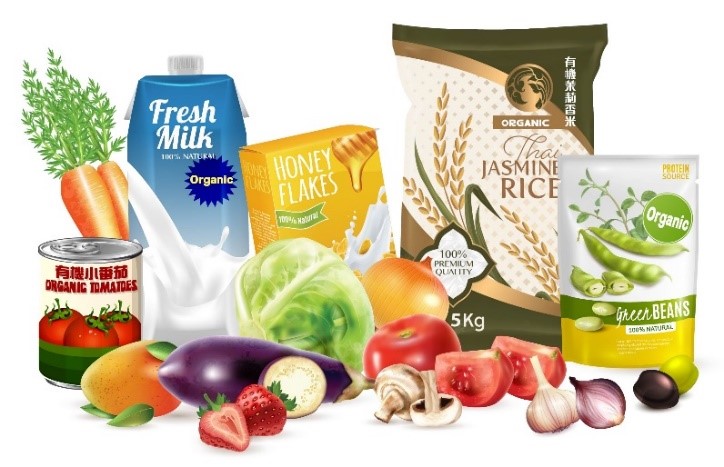
Many types of organic food are available in Hong Kong.
The Food and Agriculture Organization (FAO) and the World Health Organization of the United Nations (UN) define organic agriculture as a holistic production management system that promotes and enhances agroecosystem health, including biodiversity, biological cycles and soil biological activity. It emphasises the use of management practices in preference to the use of off-farm inputs, taking into account the local situation. This is accomplished by using, where possible, agronomic (e.g. crop rotations), biological (e.g. composting and biological pest control) and mechanical (e.g. tilling) methods, as opposed to using synthetic materials, to fulfil any specific function within the system.
To ensure that the requirements of the production management system are closely followed, inspectors appointed by certification bodies will visit farms and production sites for checks and audits. Food sold as “organic” usually carries an organic label of the certification body on its packaging for easy identification by consumers. Checking the organic label on the packaging of a product, be it locally produced or imported, helps to ensure that the food you purchase is organic.
Organic Foods: Are they Safer?
The FAO also pointed out that while organic farming may bring about benefits in respect of the environment, animal welfare, consumer preferences and income and food security for small farmers, it is not a guarantee of food safety. Organic farming means following certain production management standards throughout the production process, but it is not a food safety system. Chemical and microbiological contamination cannot be ruled out as pesticides extracted from plants are allowed to be used in organic food, and microbiological contamination from the environment and humans, etc. is possible. The main differences between organic food and conventional food lie in the production, processing and handling methods. The food safety standard that organic food has to meet is the same for any other food produced by conventional methods. In general, both organic and conventional farming can produce safe food as long as proper agricultural practices are adopted
Mascot ON in Lesson
1. Online Shopping of High-risk (Restricted) Foods
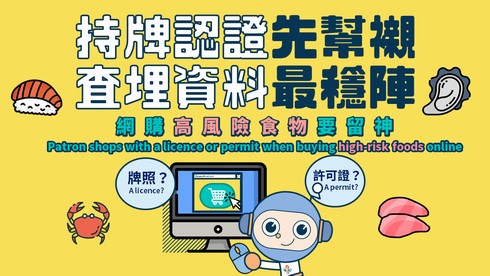
Online food shopping has become increasingly popular in recent years. Ordering food or delivered meals on the Internet or via mobile apps is convenient but consumers should exercise caution when purchasing food, particularly high-risk (restricted) foods, online. It is best to verify the licence/permit details of the food business before placing an order to ensure food safety.
Patronise Food Business with Licence/Permit
When purchasing high-risk restricted foods (e.g. oysters to be eaten in raw state, sushi and sashimi) online, customers should patronise reliable food premises/online stores or food premises/online stores issued with a licence/restricted food permit. Such premises or online stores are required under the licensing conditions of the licence/permit to provide the following information on their websites, online platform accounts and printed promotional materials for consumers' reference and verification on the FEHD's website:
- the type and number of their licence/permit;
- the type(s) of restricted food permitted for sale; and
- their business address.
Verification on the FEHD's Website
Consumers may visit the following website for the lists of food premises issued with food business licences or permits and operators without physical premises issued with permits for online sale of restricted foods.
https://www.fehd.gov.hk/english/licensing/list_licensed_premises.html
Safety of Food Purchased Online
Consumers should consume the food purchased online as soon as possible upon delivery. When ordering delivered meals online, avoid high-risk foods such as raw or undercooked food. This is especially important for susceptible populations because food delivery without proper refrigeration increases risks. For more information, please visit: cfs.gov.hk/onlinefood.
2. Keeping Shell Eggs Safe at Home
Eggs are a popular food ingredient. Consumers should patronise reliable retailers for eggs. If the eggs are sold in packages, check the “best before” date and look out for any crack or leakage. If the eggs have been refrigerated, put them in the refrigerator after returning home. Eggs that came unrefrigerated can be kept in a cool, dry place, or better still, stored in the refrigerator because cold holding reduces the chance of bacterial growth. It also keeps eggs fresh for a considerably longer period of time than at room temperature.
To achieve a longer shelf life, store boxed eggs in their original package. It is better to keep eggs in the middle of the refrigerator compartment rather than putting them in the egg rack on the refrigerator door. This minimises temperature swings which facilitate bacterial growth every time the refrigerator is opened. Once refrigerated, eggs should be kept so until use to minimise the chance of condensation which encourages surface bacterial growth and penetration into the eggs. Eggs need not be washed in general, but they can be washed if visibly soiled. Washed eggs should be used immediately. Discard any cracked eggs.
3. Insects and Insect Fragments in Cereals and Grains
Cereals and grains are agricultural products that are susceptible to infestation by pests such as rice weevils (Sitophilus oryzae). Foreign substances like insects may be found in grains (e.g. rice, corn, wheat, oats and barley) and their products (e.g. noodles and pasta). Infestation can happen before harvesting, during storage or on the production line. During food processing, some insects may be ground into fine fragments not visible to the naked eye.
Insects like rice weevils are harmless to human beings , animals, furniture and clothes. They do not bite or sting, but they damage the grains which they infest.
In general, insects cannot survive in grains with a low moisture content. Temperature control can be used when handling infested items. Rice weevils, for example, can be killed by heating the infested item to 60°C for an hour or freezing it at 0°C for a week. With that said, manufacturers should always follow good manufacturing practices, such as shortening the time between storage and processing of grain products, to reduce the chance of infestation. Consumers should avoid buying grain products with non-intact packaging and signs of infestation. After purchase, store grain products in airtight, sturdy containers and in a cool, dry place. Discard the grains if they are too damaged to be fit for consumption.
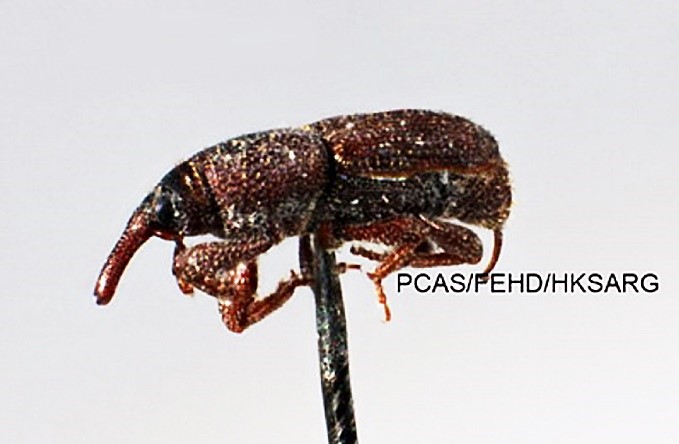
Rice weevil (Sitophilus oryzae) (By courtesy of the Pest Control Advisory Section, the Food and Environmental Hygiene Department)
Dining Out
Ciguatoxins and Coral Reef Fish
Ciguatera fish poisoning (CFP) is one of the most common types of marine food-borne poisoning in the world. The FAO estimated that 10 000 to 50 000 people worldwide are affected annually. Coral reef fish become toxic from feeding directly or indirectly on toxic microalgae (Gambierdiscus toxicus), which produces ciguatoxins. Consumption of coral reef fish contaminated with ciguatoxins may result in CFP. The occurrence of these microalgae is mainly confined to specific patches of oceans in the tropics or subtropics.
Health Significance
According to the FAO, ciguatoxins, when present at concentrations of about 0.1 μg/kg or more in fish, will cause human poisoning. The symptoms include gastrointestinal, neurological and cardiovascular disturbances and usually appear 30 minutes to 24 hours after ingestion of toxic fish. All people are susceptible to ciguatoxin poisoning. The symptoms are more likely to develop in people who have a history of CFP and have consumed alcoholic beverages, nuts and seed products.
Regulatory Control
In Hong Kong, there is no specific legislative regulation of ciguatoxin level in fish. Nevertheless, all foods for sale in Hong Kong must be fit for human consumption.
Key Points to Note
- Ciguatoxic fish cannot be identified by appearance, smell or taste.
- Coral reef fish causing CFP usually weigh more than 2 kg (3 catties).
- The head, liver, skin and roe of coral reef fish have a higher concentration of toxins.
Advice to the Public
- Consume less coral reef fish and avoid eating the head, liver, skin and roe of coral reef fish.
- Avoid alcoholic beverages, peanuts, nuts or beans when consuming coral reef fish.
- Seek medical treatment immediately if CFP symptoms develop.
For advice on preventing CFP , please visit the following webpage:
https://www.cfs.gov.hk/english/multimedia/multimedia_pub/multimedia_pub_fsf_130_01.html
Healthy Eating Basics and Smart Food Choices
Healthy Eating Basics
1. Cut Down Food Waste While Maintaining Food Safety
Food waste disposed of at landfills not only depletes our valuable land resources, but also releases a potent greenhouse gas called methane to the atmosphere as it decomposes, contributing to global warming and climate change. In recent years, there is an international consensus that a sustainable food system is indispensable for achieving climate objectives such as carbon emission reduction and facilitating the progress towards carbon neutrality.
Reducing food waste and practising food safety are never mutually exclusive. In fact, proper food handling can maximise the shelf-life of food and avoid spoilage. We can therefore cut down food waste and achieve carbon neutrality while at the same time maintaining food safety.
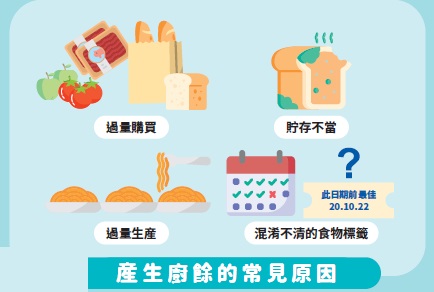
To prevent food spoilage and reduce food waste, check your food stock at home and make a shopping list before purchasing grocery. Follow the “first-in-first-out” principle and consume food with an earlier “use by” date first. Food that has passed its “best before” date may still be safe to eat despite some quality loss, as long as it is kept in accordance with the manufacturer's instructions. Check the temperature of the refrigerator to make sure that refrigerated food and frozen food are stored at a proper temperature. Leftovers should be kept in clean and airtight containers and refrigerated within two hours of cooking.
The Centre for Food Safety (CFS) has prepared leaflets to provide the public with practical tips on cutting down food waste while maintaining food safety:
https://www.cfs.gov.hk/english/multimedia/multimedia_pub/files/Cut_Down_Food_Waste.pdf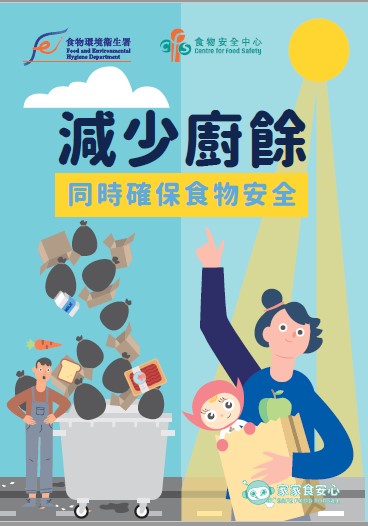
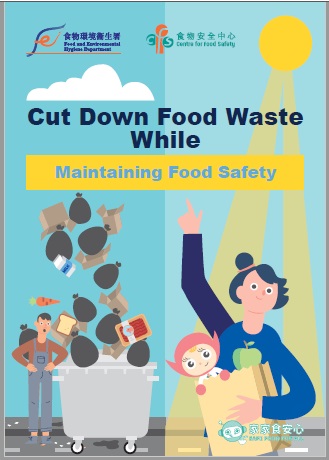
2. Be Strategic in Storing Food
During the COVID-19 pandemic, some people may choose to buy and store food in excess of their daily needs. However, food can spoil and go to waste if not stored properly. To avoid food waste, it is desirable to shop sensibly and keep a running list of dishes and ingredients. Consumers should also adopt the “first-in-first-out” principle and follow the storage instructions for the food purchased.
Proper storage condition is essential in minimising food spoilage. For food items to be kept at room temperature (e.g. canned food, cereals and potatoes), they should be stored in a cool, dry place. Perishable food should be stored in the refrigerator at 4°C or below, or in the freezer at -18°C or below. To keep the refrigerator running efficiently, allow some space in it for proper circulation of cold air. Overcrowding the refrigerator will render its cooling ineffective, which may cause food spoilage and lead to food safety concerns. Cooked/ready-to-eat food and raw food should be stored separately (e.g. reserving the top shelf of the refrigerator only for cooked/ready-to-eat food) to prevent cross-contamination.
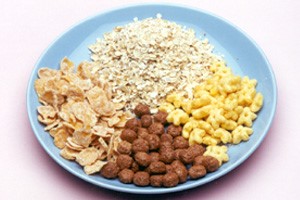
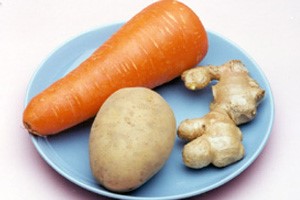
Smart Food Choices
Vegan Meal for One 🌿 Spaghetti with Black Truffle and Wild Mushrooms
Vegetarian dishes have become more popular in recent years. Even some meat lovers start to go vegan one or two days a week.
Vegetarian dishes are often considered to be relatively bland. The spaghetti with black truffle and wild mushrooms featured here is, however, perfect for those who enjoy rich flavours. Mushrooms contain more in dietary fibre than other vegetables, providing a greater sensation of fullness. Besides, mushrooms have a unique umami, which can reduce the need for seasonings. This in turn helps us achieve a low-salt diet.
The recipe is provided by Love Cafe@Lafayette Wedding. For details, please visit the “EatSmart Restaurant Star+” website of the Department of Health:
https://restaurant.eatsmart.gov.hk/eng/content.aspx?content_id=1041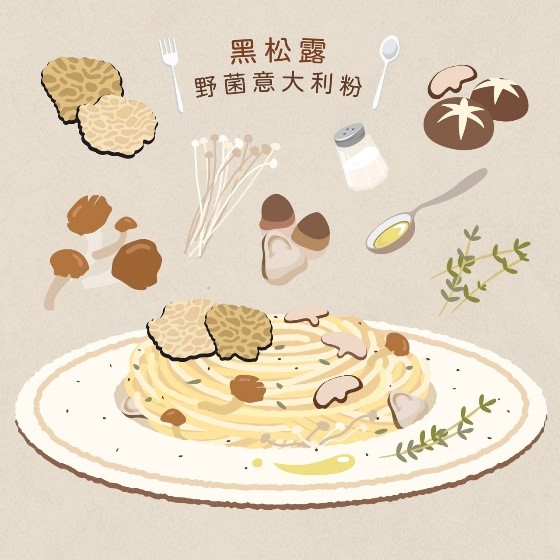
News on CFS
1. Opening of Sea Routes as a Contingency Measure for Import of Fresh Food
The Mainland is the main source of fresh food in Hong Kong. Having regard to the import of food from the Mainland via the land route being affected by the COVID-19 pandemic in February 2022, the CFS fully supported the opening of sea routes to import fresh food. Five temporary food inspection checkpoints were set up swiftly at New Yau Ma Tei Public Cargo Working Area, Kwai Chung Customhouse, Cheung Sha Wan Wholesale Food Market, and the Hong Kong International Terminals Limited and Modern Terminals Limited in Kwai Tsing Container Terminals. A task force was also established to inspect import documents on-site and collect samples for testing under the risk-based principle.
Since 19 February 2022, vegetables, fruits, eggs, meat and poultry have been shipped to Hong Kong from Guangzhou Panyu Lianhuashan Port, Shenzhen Yantian Port, Shenzhen Dachan Bay, Shekou Container Terminal, Nansha New Port and Qingdao by sea to maintain the daily market supply of such essential fresh produce.
Apart from the development of water transport, the CFS also gave active support to expedite the transportation of food by railway and implemented various measures to improve land transport arrangements.


Staff members of the CFS are conducting food inspections at one of the temporary food inspection checkpoints.
2. Food Safety Day 2022
The Food Safety Day, an annual signature publicity event organised by the CFS to echo the UN’s World Food Safety Day, will continue to be held online this year. Since there have been major local food poisoning outbreaks suspectedly caused by improper hand washing, the theme for Food Safety Day 2022 is “Clean Hands Well to Eat Well”.
In June 2022, the CFS reminded the public through social and traditional media of how and when to do proper hand washing. Food Safety Day 2022 offers a wide variety of activities, it is certainly not to be missed!

3. Launch of “EAT TV” Food Safety Channel
The CFS has launched a brand-new online short video campaign, “EAT TV” food safety channel, to keep up with the hectic pace of life in Hong Kong. The programme will go through important food safety messages with the public, along with the CFS’ mascots On and Mui, with a hint of Hong Kong TV programme-styled humour. By drawing on well-known TV programmes, we hope that the public can gain practical food safety information through entertainment, and therefore have a safer and healthier diet.
The latest short video “High Tea 久” was published on the CFS' YouTube channel on 31 March 2021 and co-streamed on the CFS' Facebook page and Instagram account.
For details, please visit the thematic website of “EAT TV” at https://www.cfs.gov.hk/english/rc/eattv/eattv.html.
4. Mascots Giveaway
To express our gratitude to the public for their long-standing support, the CFS will be giving away plush toys of our mascots, On and Mui.
If you want to get these souvenirs from the CFS, don’t miss out on our exhibitions! Details to follow on our social media pages.

Ask Our Mascots
Nutrition Labels – Address the Needs of the Whole Family
MUI: When buying food, what should we consider besides getting more bang for the buck? Health, of course! I am going to give you tips on how to use nutrition labels to make healthier choices.
Both nutrition labels and nutrition claims are covered in the Nutrition Labelling Scheme in Hong Kong. Nutrition labels provide nutrient values of packaged food so that consumers can:
✅ compare nutritional contents among different foods for a healthier choice (be a chooser, not a beggar);
✅ estimate the nutrient intake and its contribution to the overall diet based on the amount of food consumed (no more guesswork); and
✅ make food choices and adjustments to meet their health and dietary needs (help formulate personal meal plans).
The regulation on nutrition label covers a wide variety of food for people in different stages of life from infants and young children![]() to adults
to adults![]()
![]()
![]()
![]() . It includes not only some common prepackaged food (e.g. drinks, biscuits and nuts), but also infant formula, follow-up formula (e.g. milk powder) and prepackaged food for infants and young children (e.g. fruit puree and rice cereal) to address the nutritional needs of the whole family.
. It includes not only some common prepackaged food (e.g. drinks, biscuits and nuts), but also infant formula, follow-up formula (e.g. milk powder) and prepackaged food for infants and young children (e.g. fruit puree and rice cereal) to address the nutritional needs of the whole family.
MUI: Do you want to know how to utilise these useful nutrition labels and what nutrition claims are? Follow closely on our upcoming tips. You may also click on the following links to review the content![]() .
.
Resource Materials on Nutrition Labelling
https://www.cfs.gov.hk/english/programme/programme_nifl/programme_nifl_public_Resources.html
Nutrition Labelling of Prepackaged Food for Infants and Young Children
https://www.cfs.gov.hk/english/food_leg/food_leg_Formula_Products_for_Infants.html#sem
Food Safety Quiz
- What minimum core temperature should be reached for food to be “thoroughly cooked”?
- 65°C
- 75°C
- 85°C
- 90°C
- 100°C
- Which of the following is not a correct way to thaw frozen food?
- Defrosting by microwave oven
- Defrosting under running water
- Defrosting in the sink
- Defrosting by refrigerator at 4°C
- Which of the following seasonings can kill the bacteria in undercooked foods?
- Salt
- Vinegar
- Wasabi
- None of the above
Answers:
1. b 2. c 3. d
Diary of Mascot ON
Food Safety Guru Challenge
![]()
![]()
![]() Surprise Test
Surprise Test ![]()
![]()
![]() Do you want to become a food safety guru like #ON and #MUI
Do you want to become a food safety guru like #ON and #MUI![]() Here comes the chance! Let’s see if you remember by heart the food safety information shared by #CFSTeam. Show us how much you know about our mascots
Here comes the chance! Let’s see if you remember by heart the food safety information shared by #CFSTeam. Show us how much you know about our mascots![]() If you are one of the smart ones
If you are one of the smart ones![]() who get a perfect score, we may pay you a surprise visit to see how you put food safety into practice at home, and may even wash the dishes for you
who get a perfect score, we may pay you a surprise visit to see how you put food safety into practice at home, and may even wash the dishes for you![]()
![]()
![]() !
!
Click the following link to challenge yourself:
https://bit.ly/3iDK6dv
Act now! Share this with your friends and family and join the ranks of food safety gurus together!
